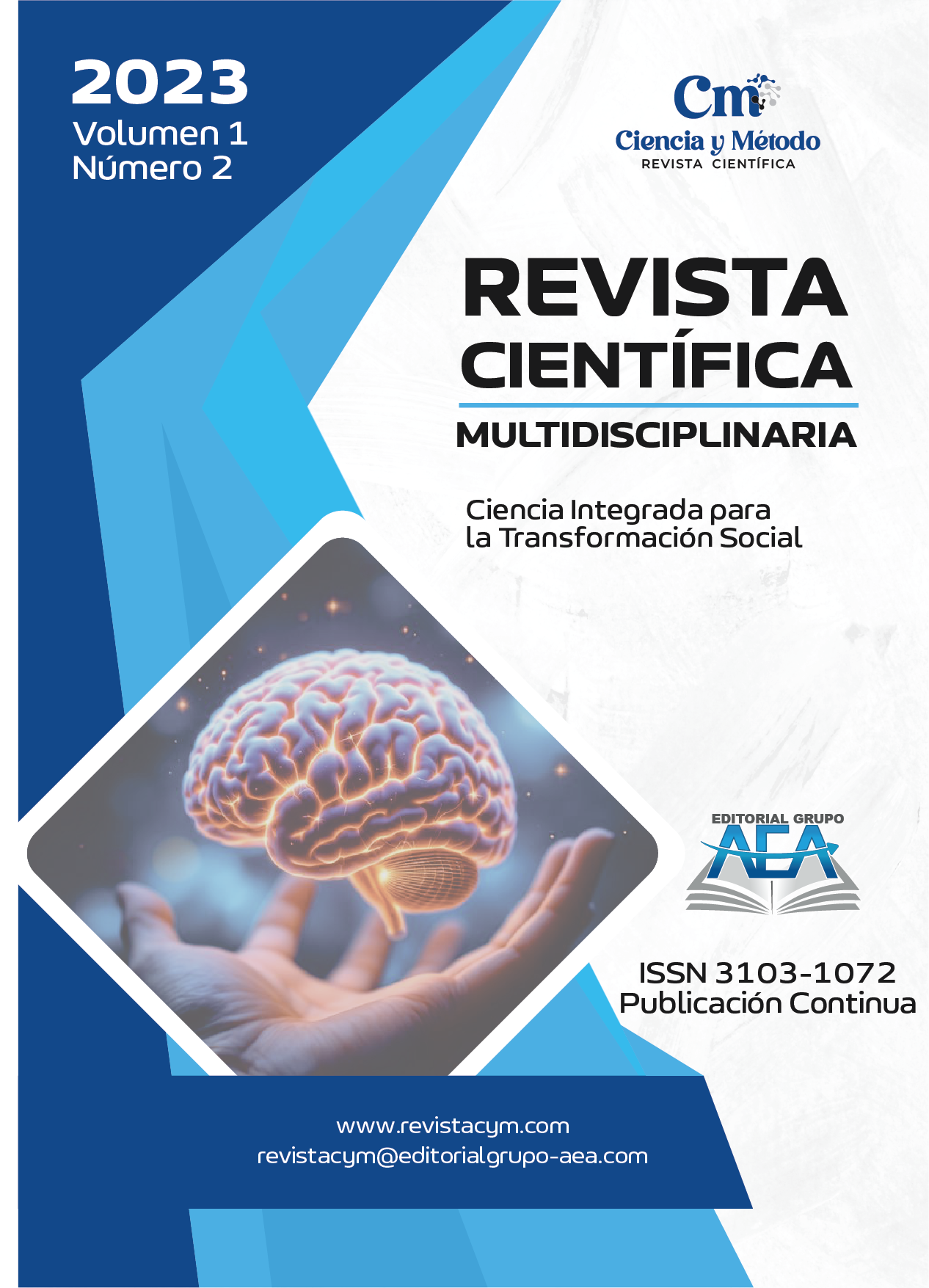Analysis of the relationship between the use of digital devices and academic performance in mathematics
Main Article Content
Abstract
This article systematically examines the relationship between the use of digital devices and academic achievement in mathematics, considering both its potential benefits and observed limitations. Through a comprehensive literature review based on sources indexed in Scopus, Web of Science, and ScienceDirect, empirical studies, meta-analyses, and systematic reviews published between 2010 and 2025 were selected. The findings indicate that, when pedagogically integrated, digital devices improve student motivation, enable personalization of learning, strengthen numeracy skills and favor academic performance. However, factors that hinder their effectiveness are also identified, such as the distraction derived from unregulated use, the limited digital competence of teachers and the lack of digital literacy among students. The discussion shows that the impact of these technologies is conditioned by contextual, didactic and structural aspects, which makes it necessary to overcome technodeterminist visions. In conclusion, the educational use of digital technologies in mathematics requires critical integration, continuous teacher training, clear regulation and inclusive strategies to reduce digital divides and enhance meaningful learning.
Downloads
Article Details
Section

This work is licensed under a Creative Commons Attribution-NonCommercial 4.0 International License.
How to Cite
References
Almeida-Blacio, J. H. (2023). Avance de la facturación electrónica y su impacto económico en el sector de imprentas. In Sinergia Científica: Integrando las Ciencias desde una Perspectiva Multidisciplinaria (pp. 67–84). Editorial Grupo AEA. https://doi.org/10.55813/egaea.cl.2022.23 DOI: https://doi.org/10.55813/egaea.cl.2022.23
Bulman, G., & Fairlie, R. W. (2016). Technology and Education: Computers, Software, and the Internet. En Handbook of the Economics of Education (Vol. 5, pp. 239–280). Elsevier. https://doi.org/10.1016/bs.hesedu.2016.03.002 DOI: https://doi.org/10.1016/B978-0-444-63459-7.00005-1
Casanova-Villalba, C. I., Proaño-González, E. A., Macias-Loor, J. M., & Ruiz-López, S. E. (2023). La contabilidad de costos y su incidencia en la rentabilidad de las PYMES. Journal of Economic and Social Science Research, 3(1), 17–30. https://doi.org/10.55813/gaea/jessr/v3/n1/59 DOI: https://doi.org/10.55813/gaea/jessr/v3/n1/59
Cheung, A. C. K., & Slavin, R. E. (2013). The effectiveness of educational technology applications for enhancing mathematics achievement in K-12 classrooms: A meta-analysis. Educational Research Review, 9, 88–113. https://doi.org/10.1016/j.edurev.2013.01.001 DOI: https://doi.org/10.1016/j.edurev.2013.01.001
Ertmer, P. A., & Ottenbreit-Leftwich, A. T. (2010). Teacher Technology Change: How Knowledge, Confidence, Beliefs, and Culture Intersect. Journal of Research on Technology in Education, 42(3), 255–284. https://doi.org/10.1080/15391523.2010.10782551 DOI: https://doi.org/10.1080/15391523.2010.10782551
Herrera-Enríquez, G., Herrera-Sánchez, M., Casanova-Villalba, C., Puyol-Cortez, J.,
Mendoza-Armijos, H, (2021). Manual para Elaboración del Plan de Titulación como Conclusión de Carrera. Editorial Grupo Compás.
Herrera-Sánchez, M. J., Navarrete-Zambrano, C. M., Núñez-Liberio, R. V., & López-Pérez, P. J. (2023). Elementos de un sistema de costeo para la producción de Sacha Inchi. Journal of Economic and Social Science Research, 3(1), 1–16. https://doi.org/10.55813/gaea/jessr/v3/n1/58 DOI: https://doi.org/10.55813/gaea/jessr/v3/n1/58
Junco, R. (2012). The relationship between frequency of Facebook use, participation in Facebook activities, and student engagement. Computers & Education, 58(1), 162–171. https://doi.org/10.1016/j.compedu.2011.08.004 DOI: https://doi.org/10.1016/j.compedu.2011.08.004
Larkin, K., & Calder, N. (2016). Mathematics education and mobile technologies. Math Ed Res J 28, 1–7. https://doi.org/10.1007/s13394-015-0167-6 DOI: https://doi.org/10.1007/s13394-015-0167-6
Lepp, A., Barkley, J. E., & Karpinski, A. C. (2014). The relationship between cell phone use, academic performance, anxiety, and satisfaction with life in college students. Computers in Human Behavior, 31, 343–350. https://doi.org/10.1016/j.chb.2013.10.049 DOI: https://doi.org/10.1016/j.chb.2013.10.049
Li, Q., & Ma, X. (2010). A meta-analysis of the effects of computer technology on school students’ mathematics learning. Educational Psychology Review, 22(3), 215–243. https://doi.org/10.1007/s10648-010-9125-8 DOI: https://doi.org/10.1007/s10648-010-9125-8
López-Pérez, P. J., Quiñónez-Cabeza, B. M., Preciado-Ramírez, J. D., Salgado-Ortiz, P. J., Armijos-Sánchez, E. S., & Proaño-González, E. A. (2023). NIIF FULL: Una guía práctica para su aplicación. Editorial Grupo AEA. https://doi.org/10.55813/egaea.l.2022.22 DOI: https://doi.org/10.55813/egaea.l.2022.22
Ng, W. (2012). Can we teach digital natives digital literacy? Computers & Education, 59(3), 1065–1078. https://doi.org/10.1016/j.compedu.2012.04.016 DOI: https://doi.org/10.1016/j.compedu.2012.04.016
Núñez-Liberio, R. V., Suarez-Núñez, M. V., Navarrete-Zambrano, C. M., Ruiz-López, S. E., & Almenaba-Guerrero, P. Y. (2023). Sistema de Costos por Órdenes de Producción para PYMES. Editorial Grupo AEA. https://doi.org/10.55813/egaea.l.2022.26 DOI: https://doi.org/10.55813/egaea.l.2022.26
Ophir, E., Nass, C., & Wagner, A. D. (2009). Cognitive control in media multitaskers. Proceedings of the National Academy of Sciences, 106(37), 15583–15587. https://doi.org/10.1073/pnas.0903620106 DOI: https://doi.org/10.1073/pnas.0903620106
Pane, J. F., Steiner, E. D., Baird, M. D., & Hamilton, L. S. (2017). Informing Progress: Insights on Personalized Learning Implementation and Effects. RAND Corporation. https://doi.org/10.7249/RR2042 DOI: https://doi.org/10.7249/RR2042
Papadakis, S., Kalogiannakis, M., & Zaranis, N. (2018). The effectiveness of computer and tablet assisted intervention in early childhood students’ understanding of numbers. An empirical study conducted in Greece. Educ Inf Technol 23, 1849–1871. https://doi.org/10.1007/s10639-018-9693-7 DOI: https://doi.org/10.1007/s10639-018-9693-7
Reymundo-Soto, E., Fernández-Condori, X. P., Echevarria-Quispe, E. V., Quispe-Cusi, Y., Gutiérrez-Quispe, E. Z., Palacios-Aguilar, L. J., & Ramírez-Laurente, A. J. (2023). Obligaciones Tributarias y su Influencia en la Recaudación Fiscal de las Micro y Pequeñas Empresas. Editorial Grupo AEA. https://doi.org/10.55813/egaea.l.2022.35 DOI: https://doi.org/10.55813/egaea.l.2022.35
Rivadeneira Moreira, J. C., Herrera Sánchez, M. J., Casanova Villalba, C. I., & Bueno Moyano, F. R. (2022). Estadística y crecimiento empresarial: análisis bibliométrico. AlfaPublicaciones, 4(2), 6–20. https://doi.org/10.33262/ap.v4i2.195 DOI: https://doi.org/10.33262/ap.v4i2.195
Roschelle, J., Feng, M., Murphy, R., & Mason, C. A. (2016). Online mathematics homework increases student achievement. AERA Open, 2(4), 1–12. https://doi.org/10.1177/2332858416673968 DOI: https://doi.org/10.1177/2332858416673968
Silva Alvarado, J. C., & Herrera Navas, C. D. (2022). Estudio de Kahoot como recurso didáctico para innovar los procesos evaluativos pospandemia de básica superior de la Unidad Educativa Iberoamericano. Journal of Economic and Social Science Research, 2(4), 15–40. https://doi.org/10.55813/gaea/jessr/v2/n4/23 DOI: https://doi.org/10.55813/gaea/jessr/v2/n4/23
Tamim, R. M., Bernard, R. M., Borokhovski, E., Abrami, P. C., & Schmid, R. F. (2011). What forty years of research says about the impact of technology on learning: A second-order meta-analysis and validation study. Review of Educational Research, 81(1), 4–28. https://doi.org/10.3102/0034654310393361 DOI: https://doi.org/10.3102/0034654310393361
Tondeur, J., van Braak, J., Ertmer, P. A., & Ottenbreit-Leftwich, A. (2017). Understanding the relationship between teachers’ pedagogical beliefs and technology use in education: A systematic review of qualitative evidence. Educational Technology Research and Development, 65(3), 555–575. https://doi.org/10.1007/s11423-016-9481-2 DOI: https://doi.org/10.1007/s11423-016-9481-2
van Deursen, A. J. A. M., & van Dijk, J. A. G. M. (2013). The digital divide shifts to differences in usage. New Media & Society, 16(3), 507–526. https://doi.org/10.1177/1461444813487959 DOI: https://doi.org/10.1177/1461444813487959
Zheng, B., Warschauer, M., Lin, C.-H., & Chang, C. (2016). Learning in one-to-one laptop environments: A meta-analysis and research synthesis. Review of Educational Research, 86(4), 1052–1084. https://doi.org/10.3102/0034654316628645 DOI: https://doi.org/10.3102/0034654316628645





